Resources
Here you can search external resources from STOP Spillover's experts (tagged in blue) and resources developed by the STOP Spillover project (tagged in red).
We found 142 resources.
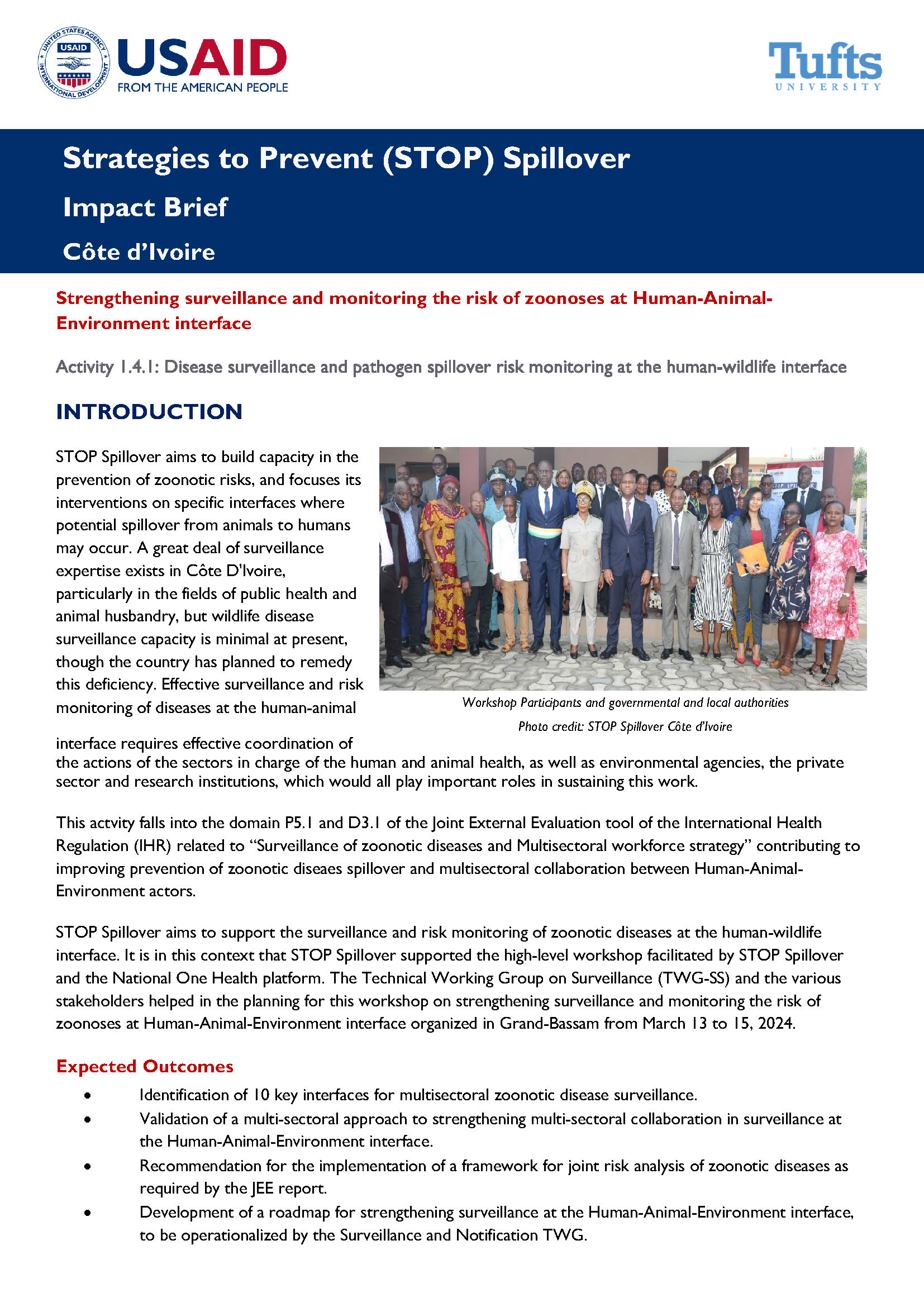
This brief summarizes a three-day workshop focusing on Identifying and identifying the status of ten key human-animal-environment interfaces, discussing a coordination framework for joint zoonotic disease risk assessment, developing a roadmap for collaboration in the surveillance and monitoring of zoonotic disease risks, and discussing STOP Spillover activities carried out over the previous twelve months.
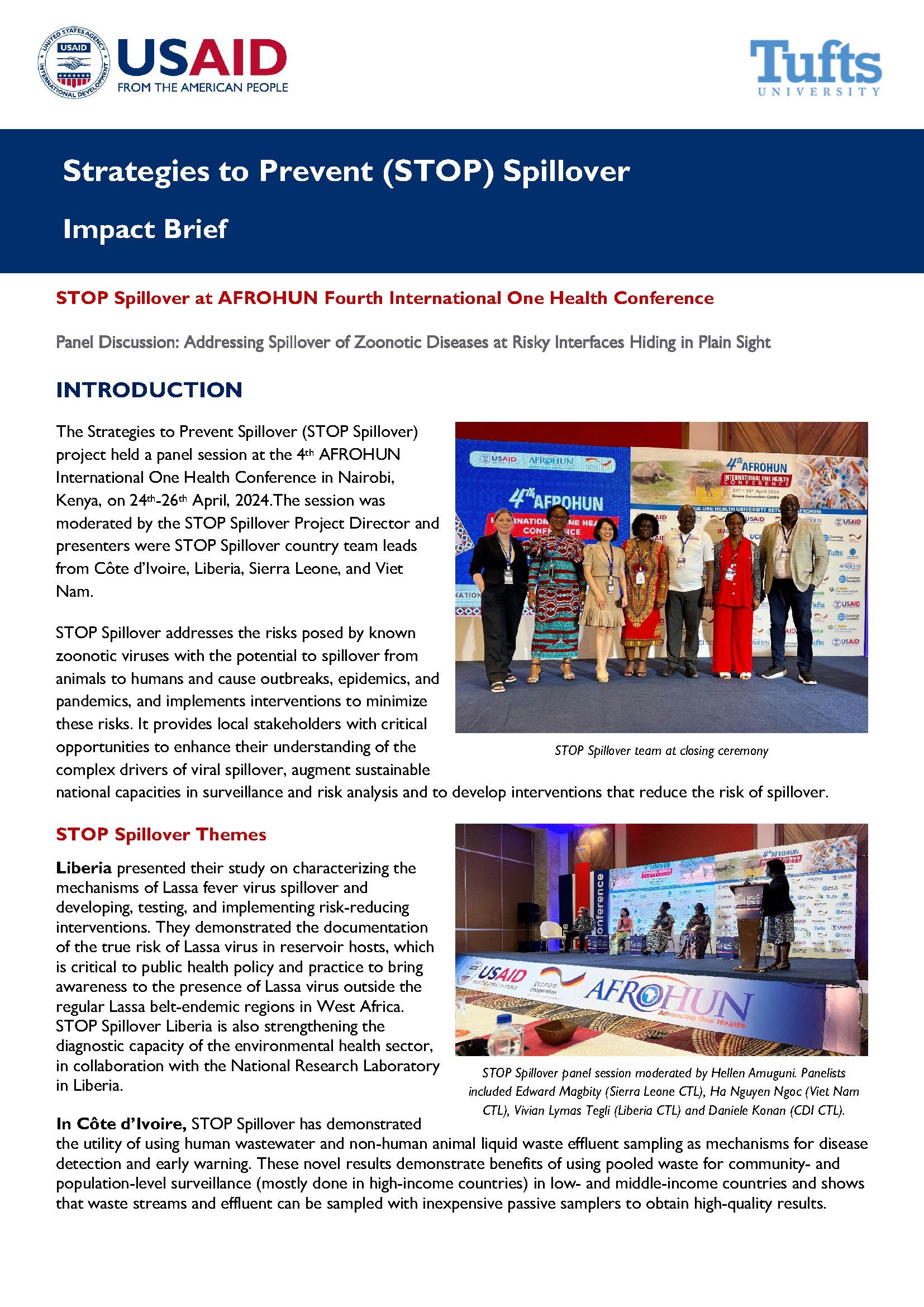
Impact Brief: STOP Spillover at AFROHUN Fourth International One Health Conference
This brief describes presentations and posters shared by the STOP Spillover Project Director and Country Team Leads from Côte d’Ivoire, Liberia, Sierra Leone, and Viet Nam during AFROHUN's Fourth International One Health Conference held in Nairobi, Kenya in April 2024.
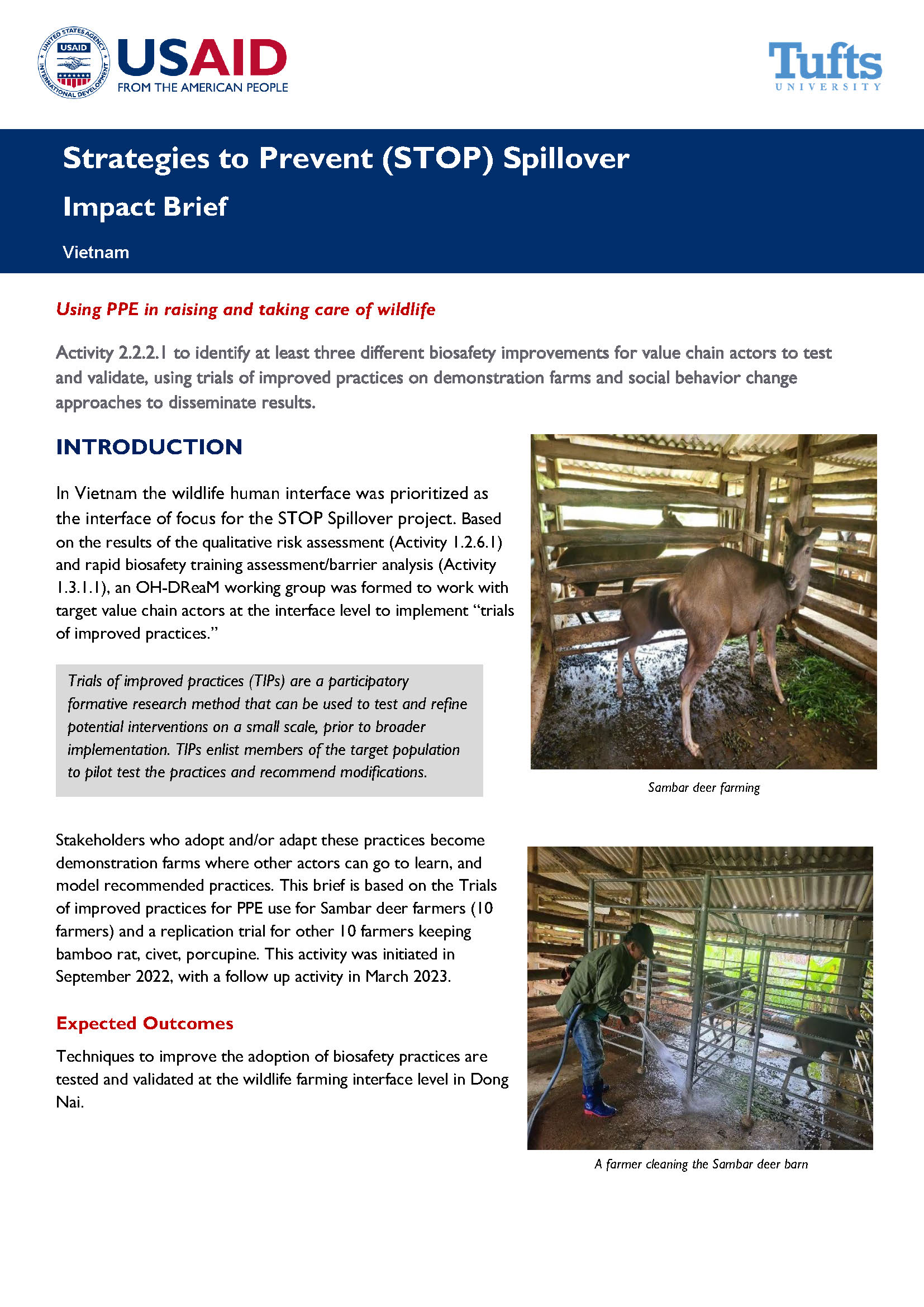
Impact Brief: Using PPE in Raising and Taking Care of Wildlife
This brief describes implementation of a TIP (Trial of Improved Practices) for Sambar deer farming and its replication in bamboo rat, civet, and porcupine farming. The TIP involved using personal protective equipment (e.g., protective clothing, face masks, gloves, boots) during farming activities.
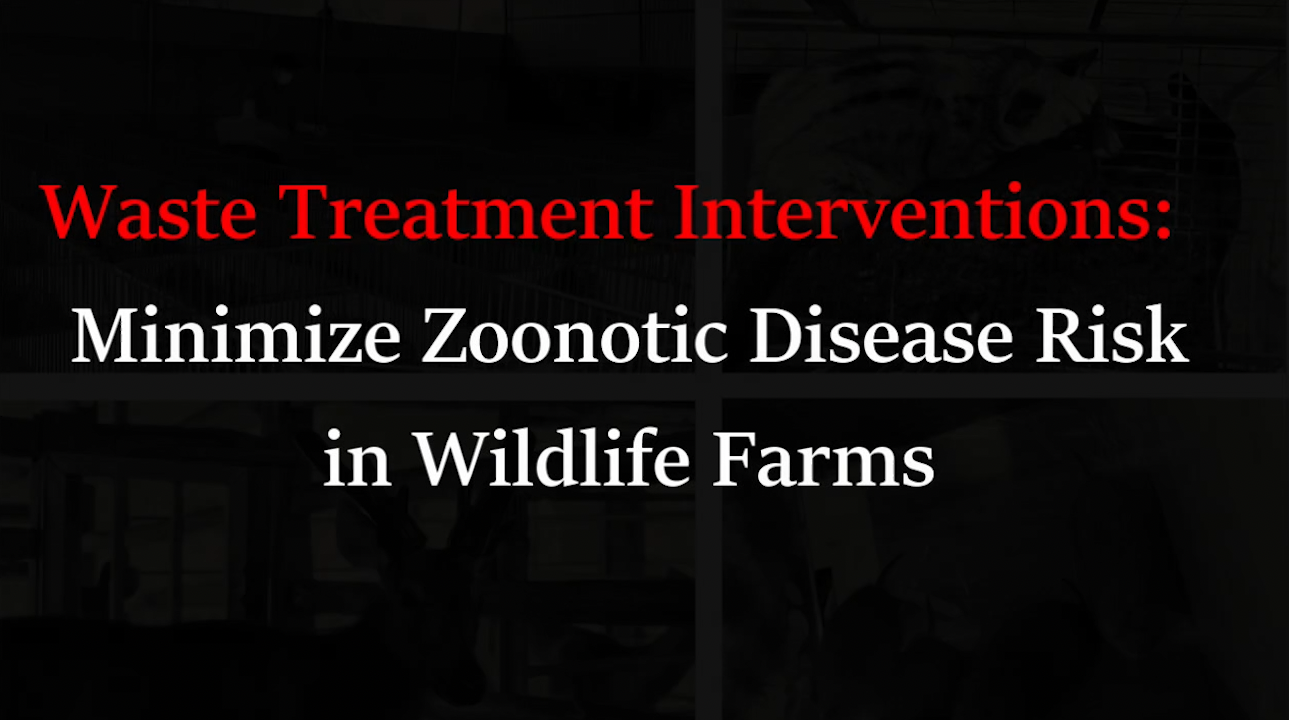
This video describes the STOP Spillover Viet Nam Country Team's work with partners and wildlife farmers in Dong Nai province to implement waste treatment interventions to reduce the risk of zoonotic disease transmission in wildlife farms.
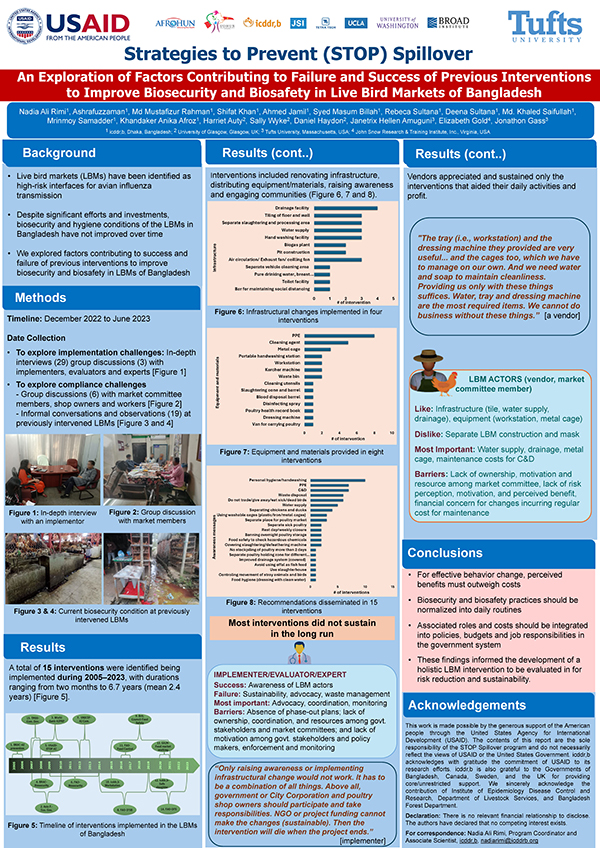
This STOP Spillover poster, presented at the June 2024 Global Health Security Conference, summarizes the Bangladesh Country Team's research on factors associated with the outcomes of earlier biosafety interventions in live bird markets in Dhaka.
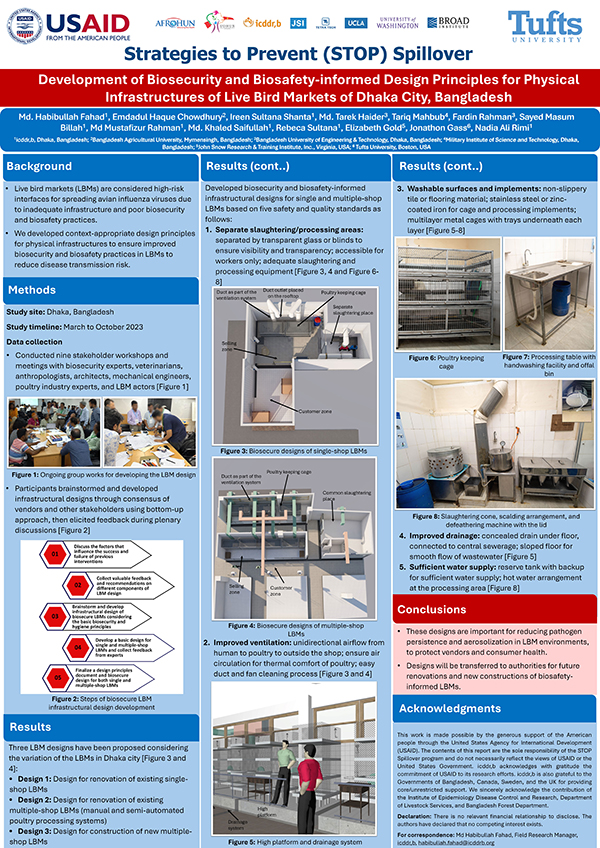
This STOP Spillover poster, presented at the June 2024 Global Health Security Conference, describes the Bangladesh Country Team's infrastructure designs for single and multiple-shop live bird markets based on biosafety and quality standards.
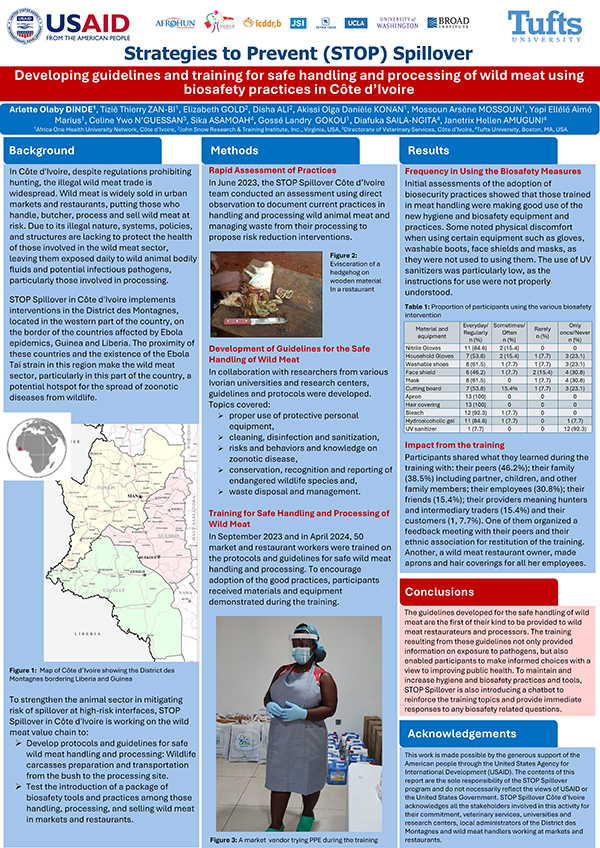
This STOP Spillover poster, presented at the June 2024 Global Health Security Conference, describes the Côte d'Ivoire Country Team's development of biosafety guidelines and training for those involved in the wild meat trade, which addressed issues such as hygiene in processing, waste management, sanitization, cleaning and disinfection and the proper use of PPE.
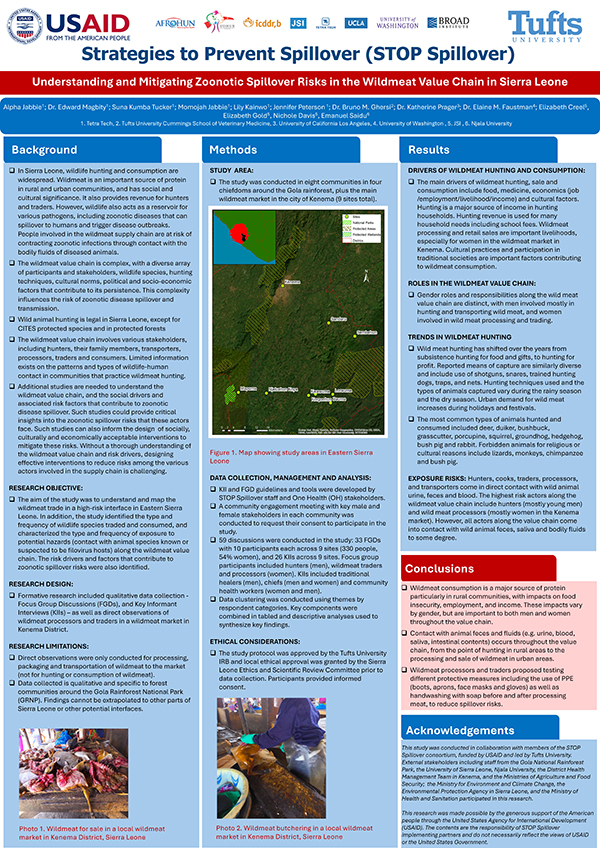
Understanding and Mitigating Zoonotic Spillover Risks in the Wildmeat Value Chain in Sierra Leone
This STOP Spillover poster, presented at the June 2024 Global Health Security Conference, describes the Sierra Leone Country Team's study of the wildmeat trade in a high-risk interface in Eastern Sierra Leone, which found that the main drivers of wildmeat hunting, sale, and consumption are food, medicine, economics, and cultural factors.
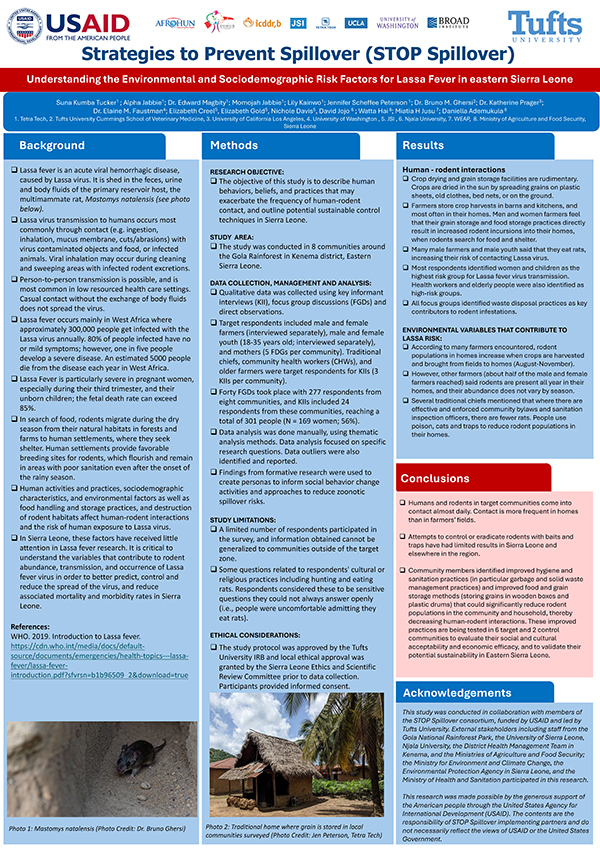
This STOP Spillover poster, presented at the June 2024 Global Health Security Conference, describes the Sierra Leone Country Team's study of the human behaviors, beliefs, and practices that influence the frequency of human-rodent contact and the spread of Lassa virus. Data were collected through focus groups, key informant interviews, and direct observation.
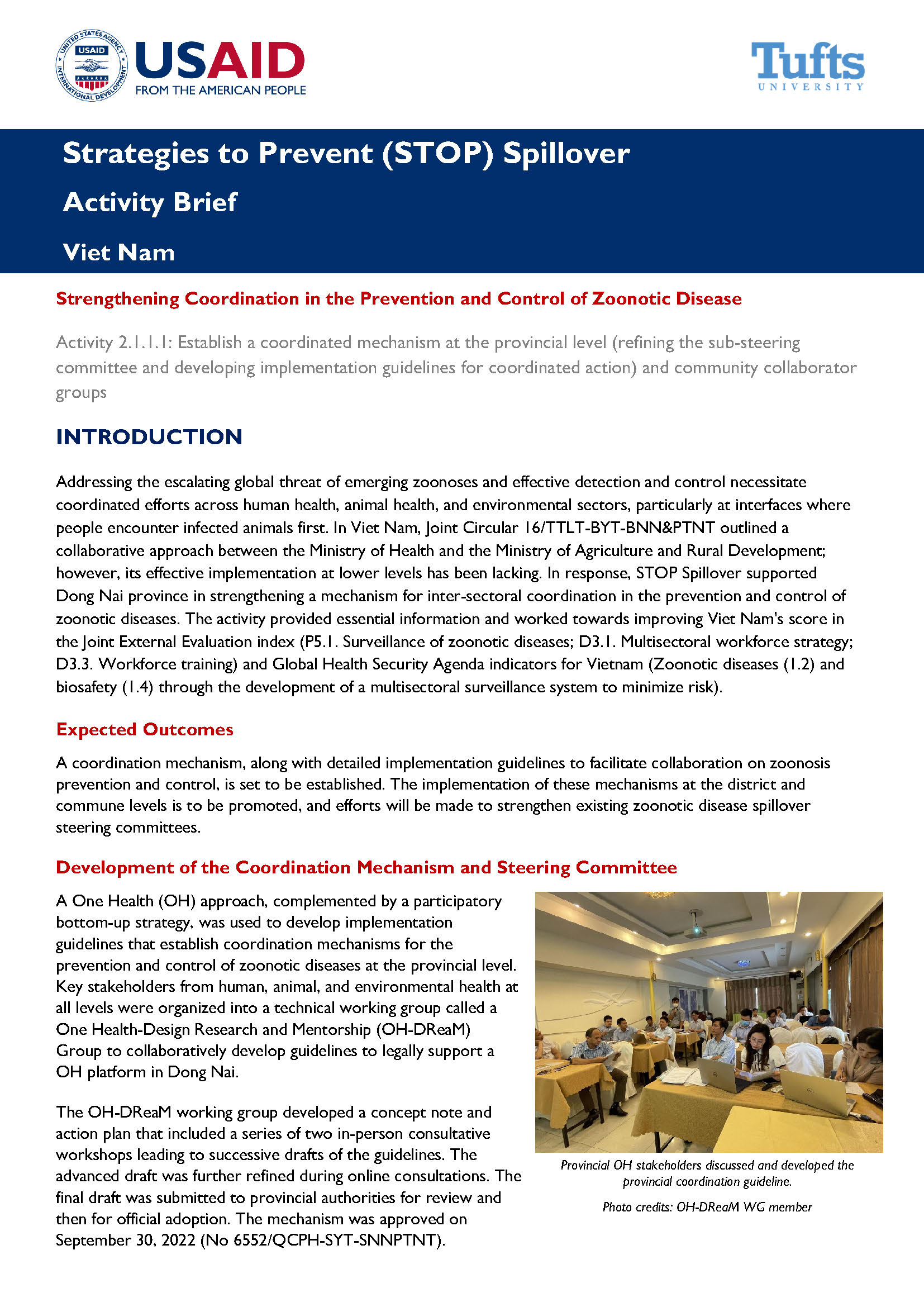
Impact Brief: Strengthening Coordination in the Prevention and Control of Zoonotic Disease
This brief summarizes the development of implementation guidelines that establish coordination mechanisms for the prevention and control of zoonotic diseases at the provincial level in Dong Nai province in Viet Nam. STOP Spillover then collaborated with the government to conduct dissemination workshops that prepared provincial-, district-, and commune-level stakeholders to apply the guidelines in their work and to facilitate collaboration on outbreak investigation and response.
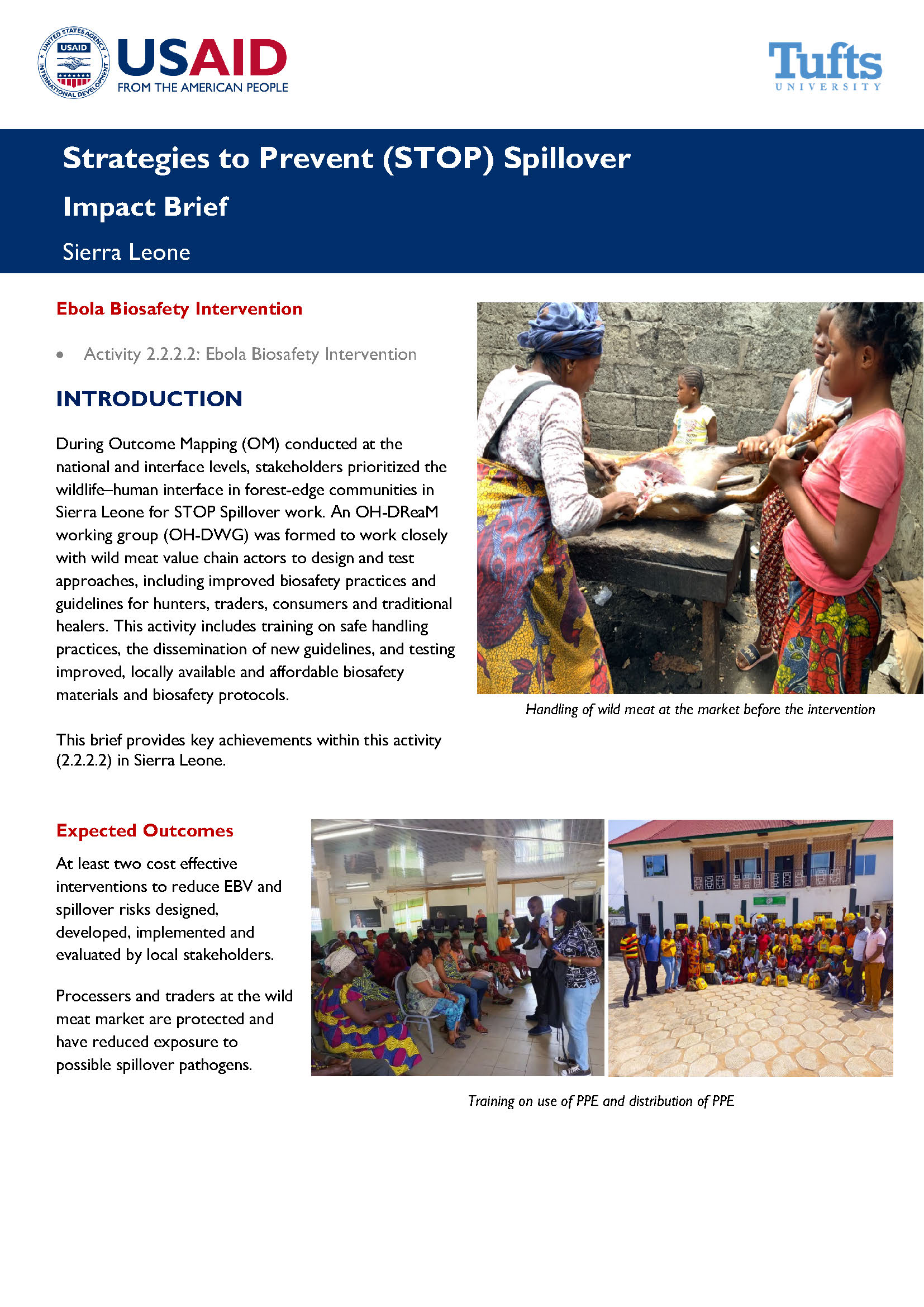
Impact Brief: Ebola Biosafety Intervention
This brief describes efforts to increase the use of biosafety materials and biosafety protocols at a wild meat market in Sierra Leone. A One Health-Design Research and Mentorship (OH-DReaM) working group developed protocols to improve the enforcement of personal protective equipment (PPE) use, women working in the market were trained on the use of PPE and provided with PPE, and a handwashing station was installed at the market.
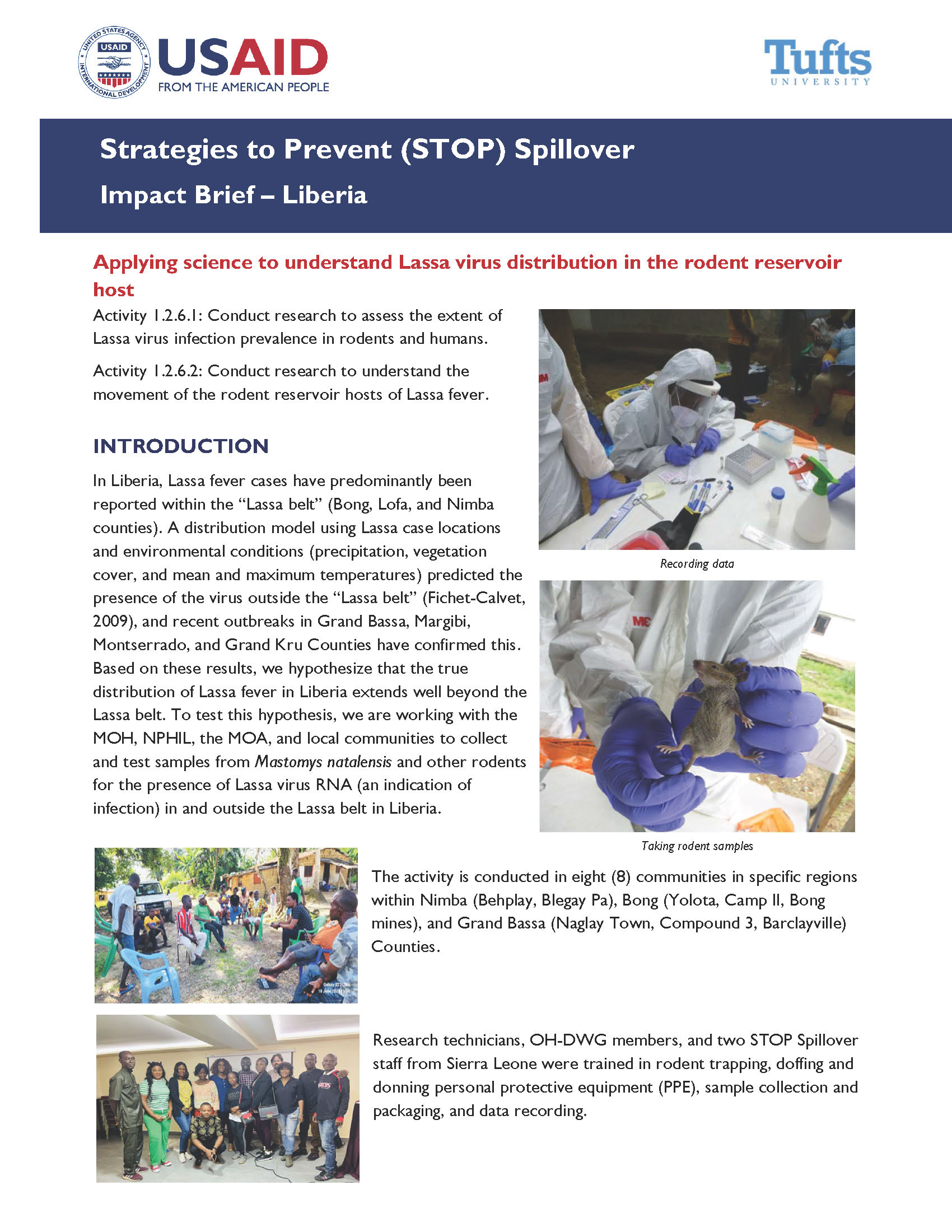
Impact Brief: Applying Science to Understand Lassa Virus Distribution in the Rodent Reservoir Host
This brief describes training held in Liberia to prepare research technicians, One Health-Design Research and Mentorship (OH-DReaM) working group members, and STOP Spillover Liberia team members to collect and test samples from rodents for the presence of Lassa virus RNA—an indication of infection. The research was conducted to understand whether the distribution of Lassa fever in Liberia extends beyond the previously identified "Lassa belt.
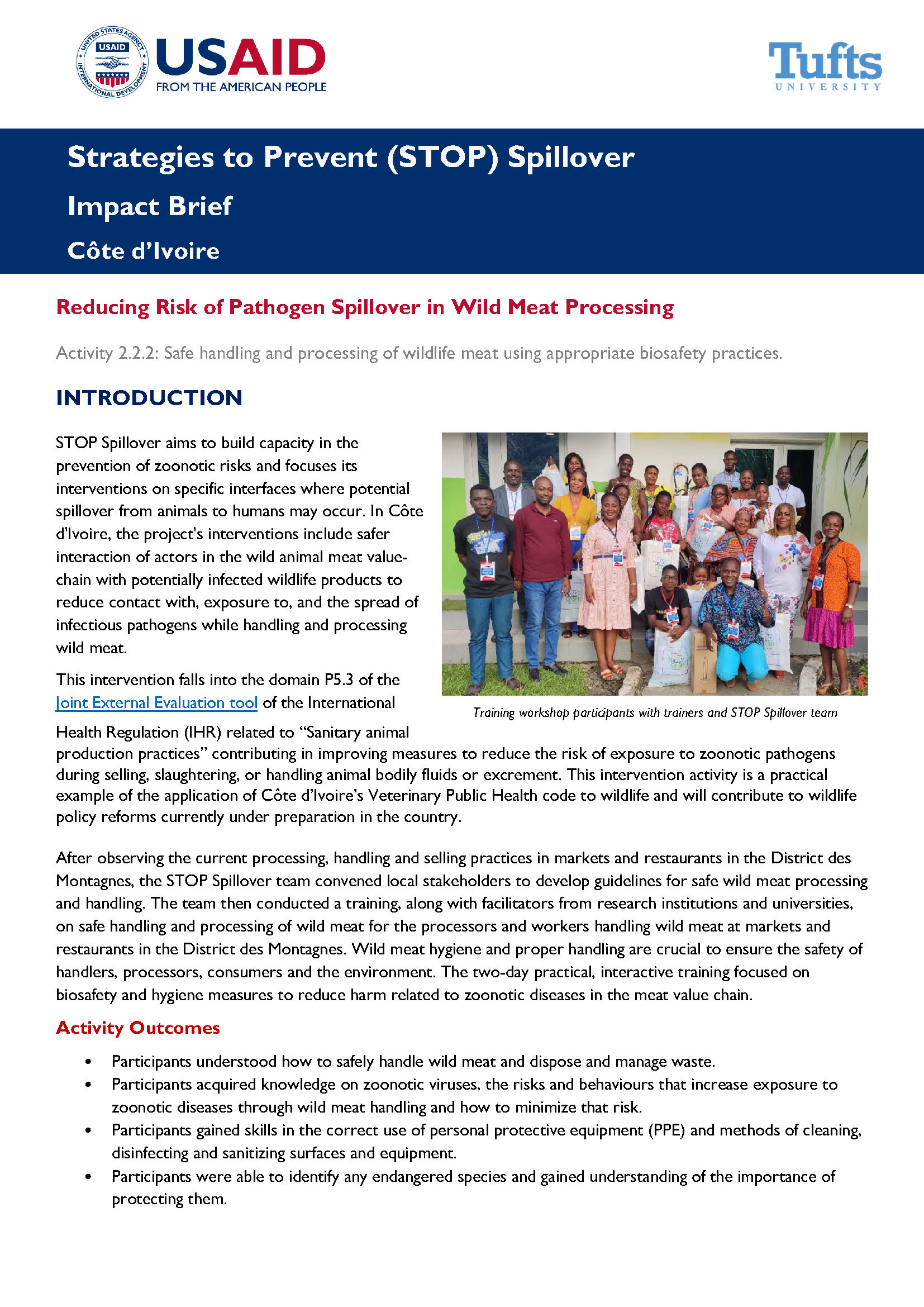
Impact Brief: Reducing Risk of Pathogen Spillover in Wild Meat Processing
This brief describes a two-day interactive training held for processors and workers who handle wild meat in markets and restaurants in the District des Montagnes in Côte d'Ivoire. The training focused on biosafety and hygiene measures to reduce harm related to zoonotic diseases in the meat value chain.
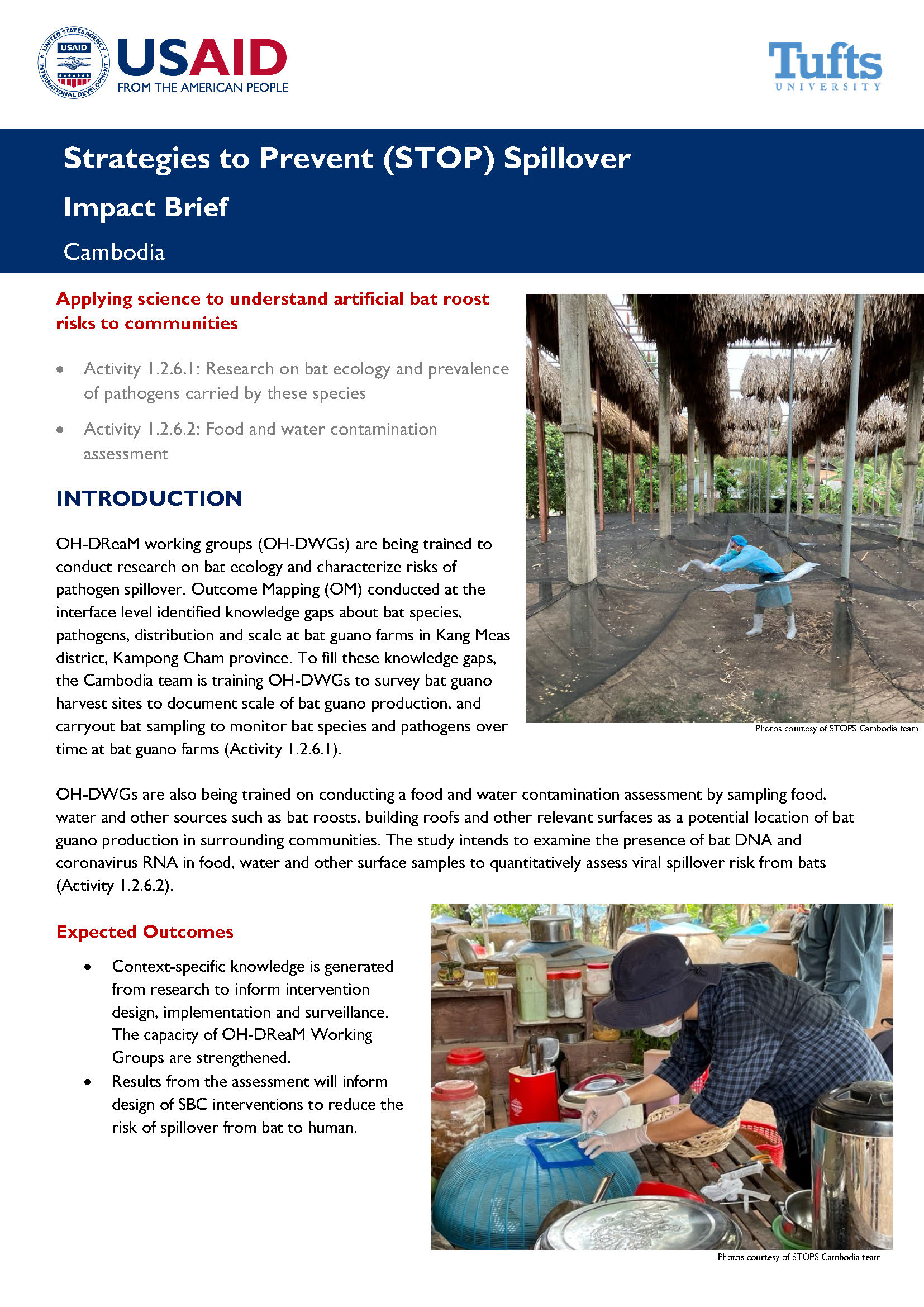
Impact Brief: Applying Science to Understand Artificial Bat Roost Risk to Communities
This brief describes training held to prepare One Health-Design Research and Mentorship (OH-DReaM) working group members and STOP Spillover Cambodia team members to survey bat guano harvest sites and carry out bat sampling at bat guano farms. Participants were also trained to conduct food and water contamination assessment in surrounding communities to quantitatively assess viral spillover risk from bats.
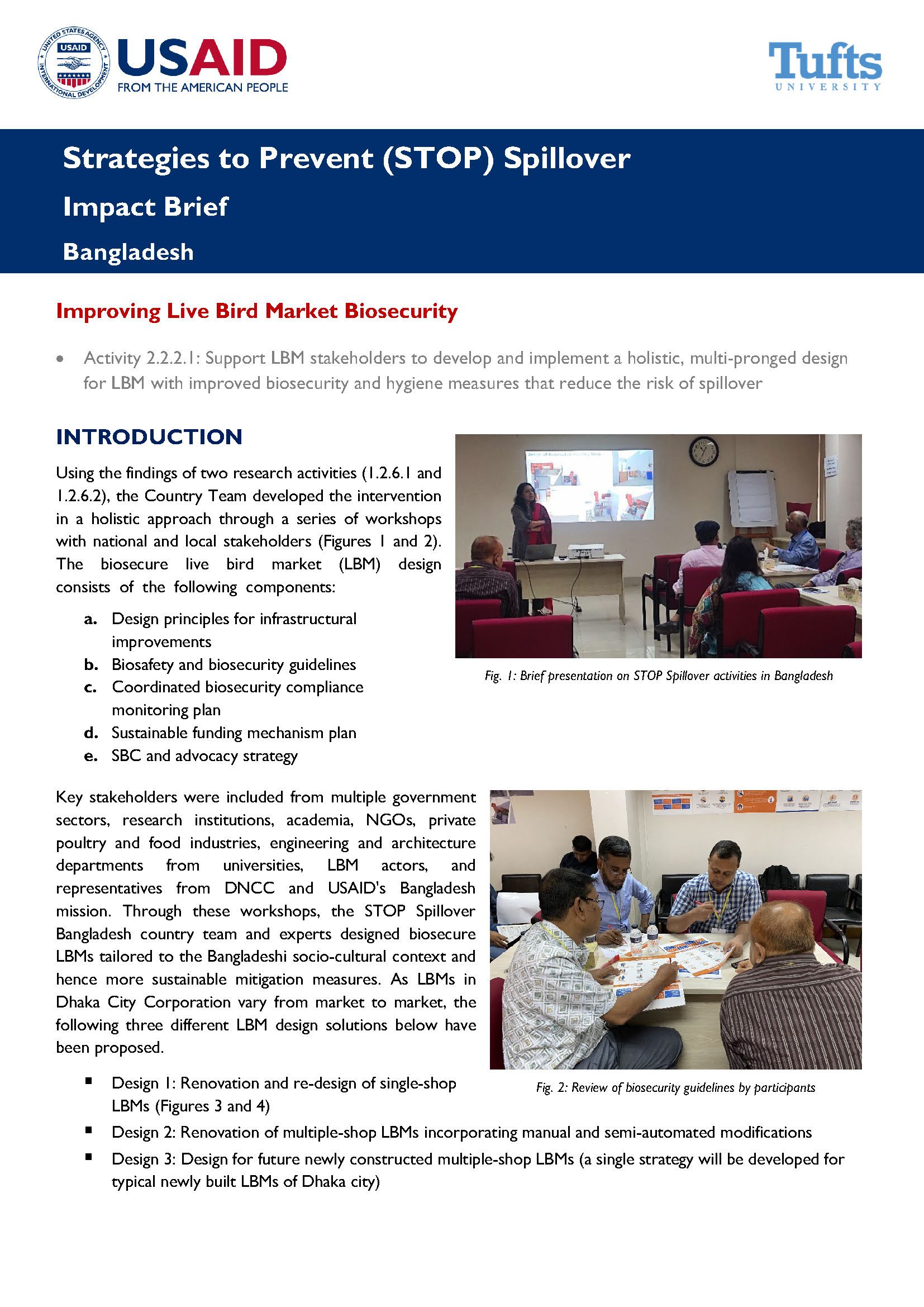
Impact Brief: Improving Live Bird Market Biosecurity
This brief summarizes the development of a holistic, multi-pronged design for a live bird market in Bangladesh that features biosecurity and hygiene measures to reduce the risk of spillover. The design was created through a series of workshops with national and local stakeholders.

STOP Spillover Year 4 Semi-Annual Report (1 October 2023 – 31 March 2024)
This report documents progress made during STOP Spillover's fourth project year in the host countries of Bangladesh, Cambodia, Côte d'Ivoire, Liberia, Sierra Leone, and Viet Nam.
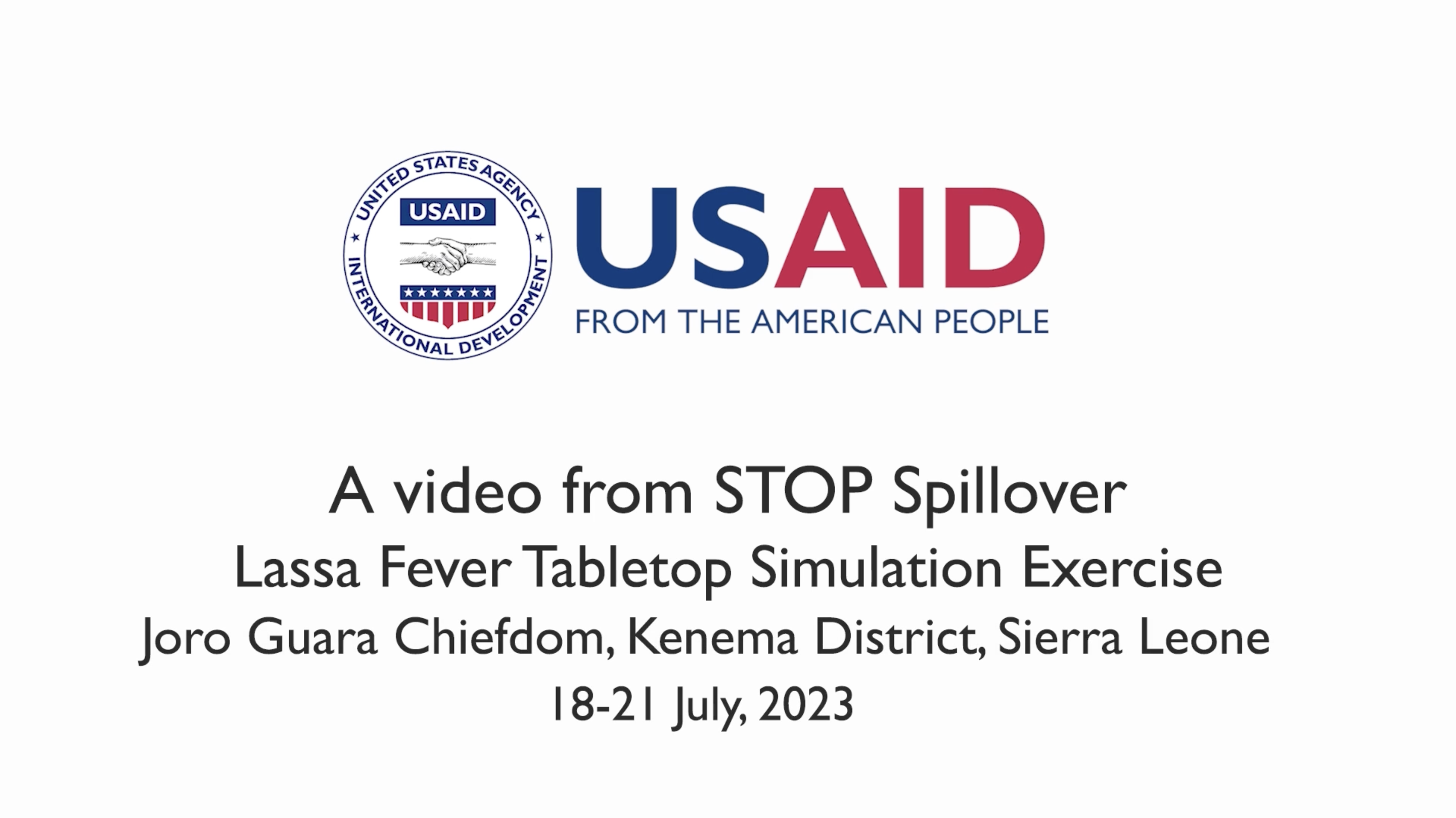
Sierra Leone Lassa Fever Tabletop Simulation Exercise
This video describes a community-level simulation exercise that the STOP Spillover Sierra Leone Country Team held to assess community readiness, structural functionality, and the ability to respond to a potential Lassa fever outbreak in a high-risk community in Kenema District.
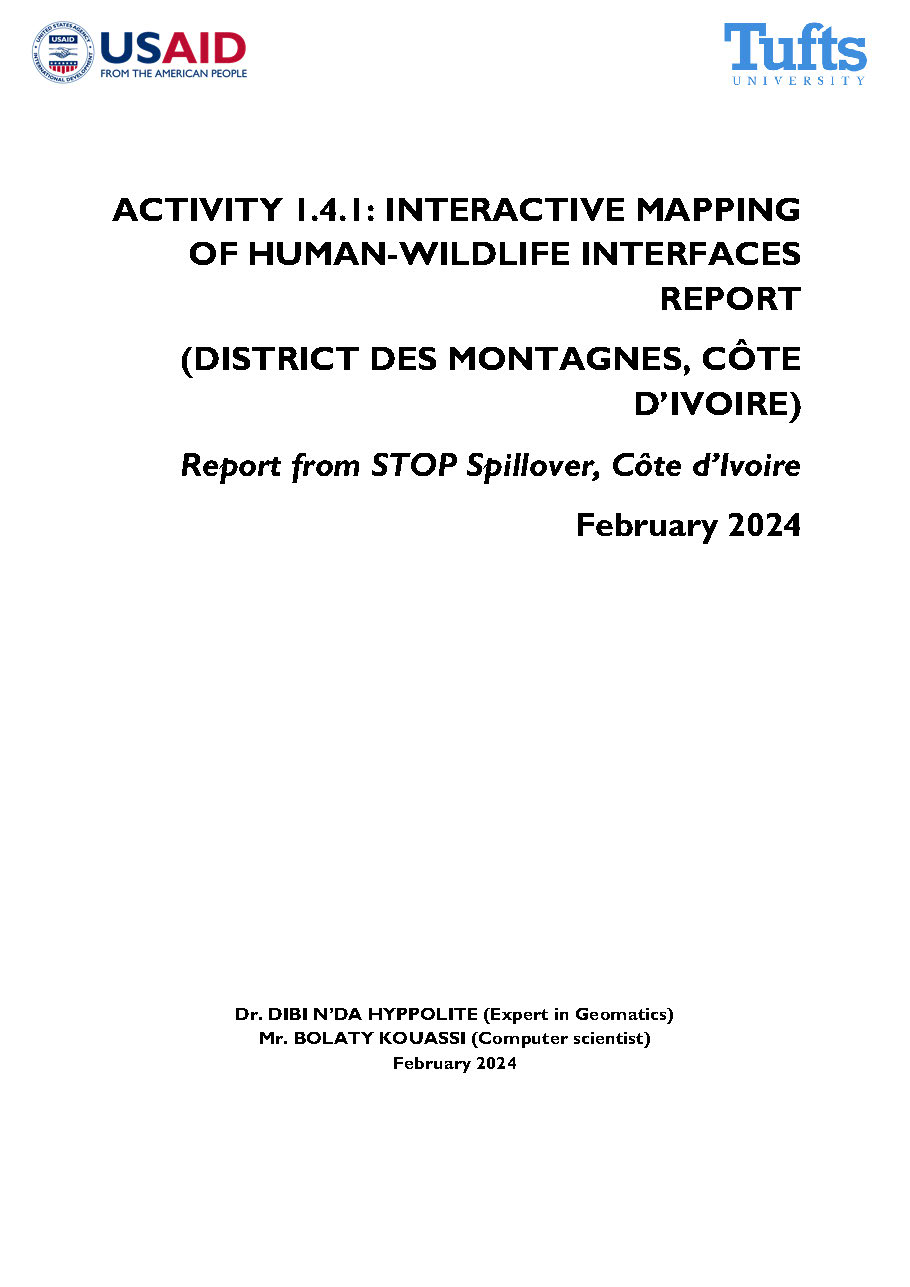
Interactive Mapping of Human-Wildlife Interfaces: A Report from STOP Spillover Côte d'Ivoire
This report summarizes the development of a spatial database of the levels of interaction between humans and wildlife in the District des Montagnes in Côte d'Ivoire, including the creation of an interactive platform for identifying areas of high human-wildlife interaction and potentially high zoonotic disease risk.
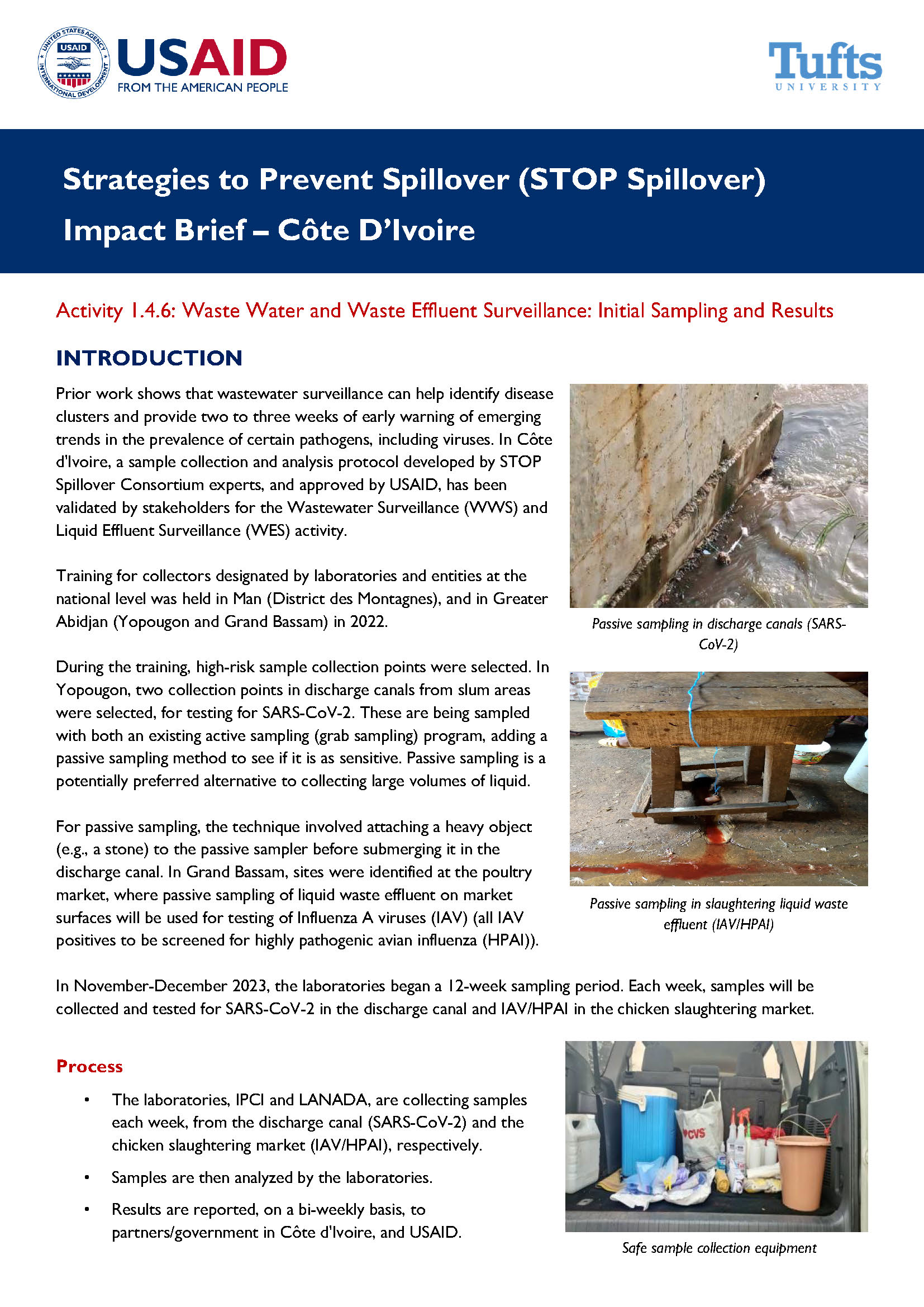
Impact Brief: Waste Water and Waste Effluent Surveillance: Initial Sampling and Results
This brief describes an initiative to conduct sampling of waste water and liquid waste effluent at high-risk sample collection points in Côte d’Ivoire. Some of the samples were found to be positive for SARS-CoV-2 or Influenza A viruses. The results demonstrate the utility and benefits of wastewater and liquid waste surveillance in low- and middle-income countries, in particular the use of inexpensive passive samplers to obtain high-quality results.
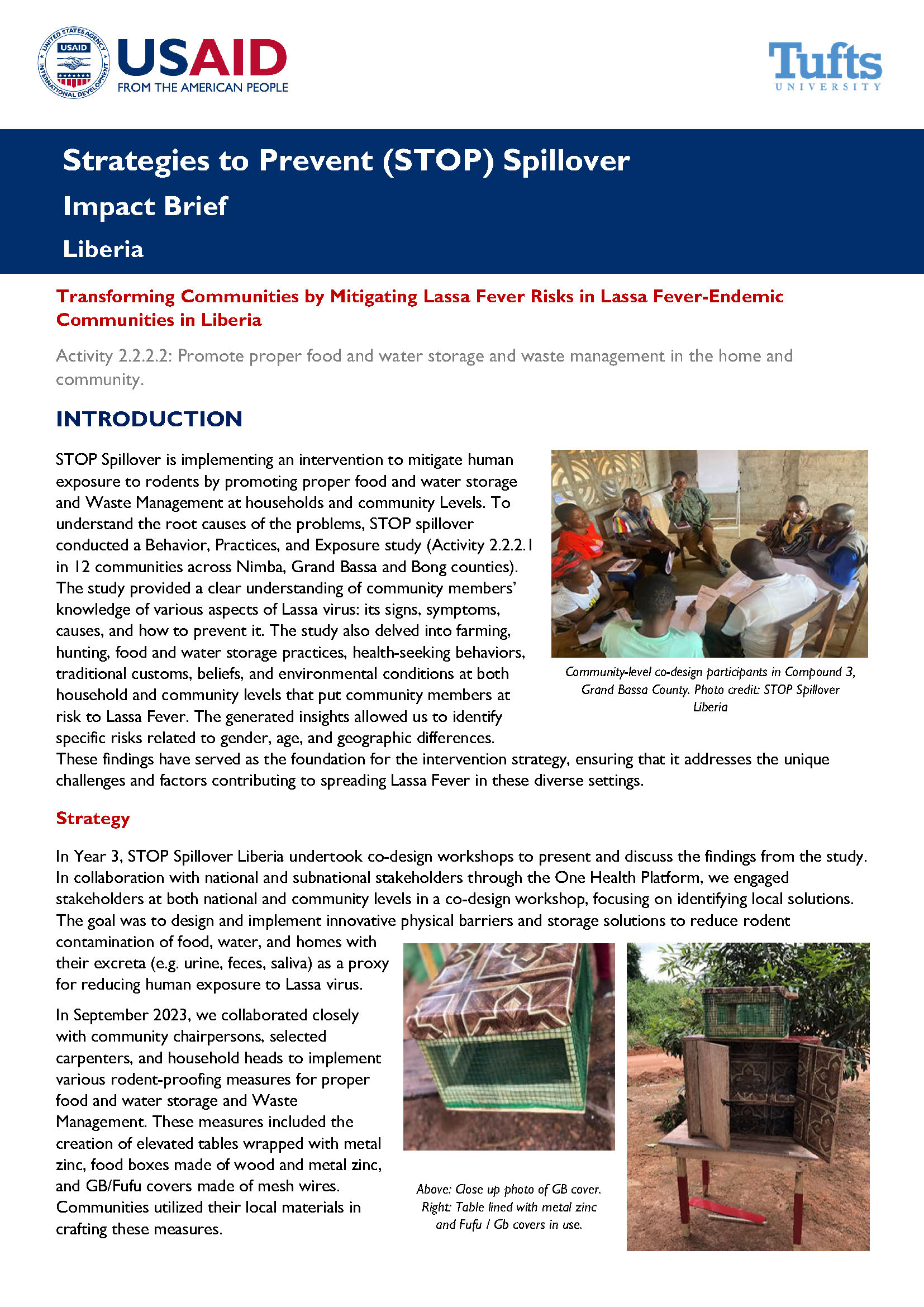
This brief describes an intervention featuring collaboration with national and local stakeholders to design and implement innovative physical barriers and storage solutions to reduce rodent contamination of food, water, and homes as a proxy for reducing human exposure to Lassa virus.